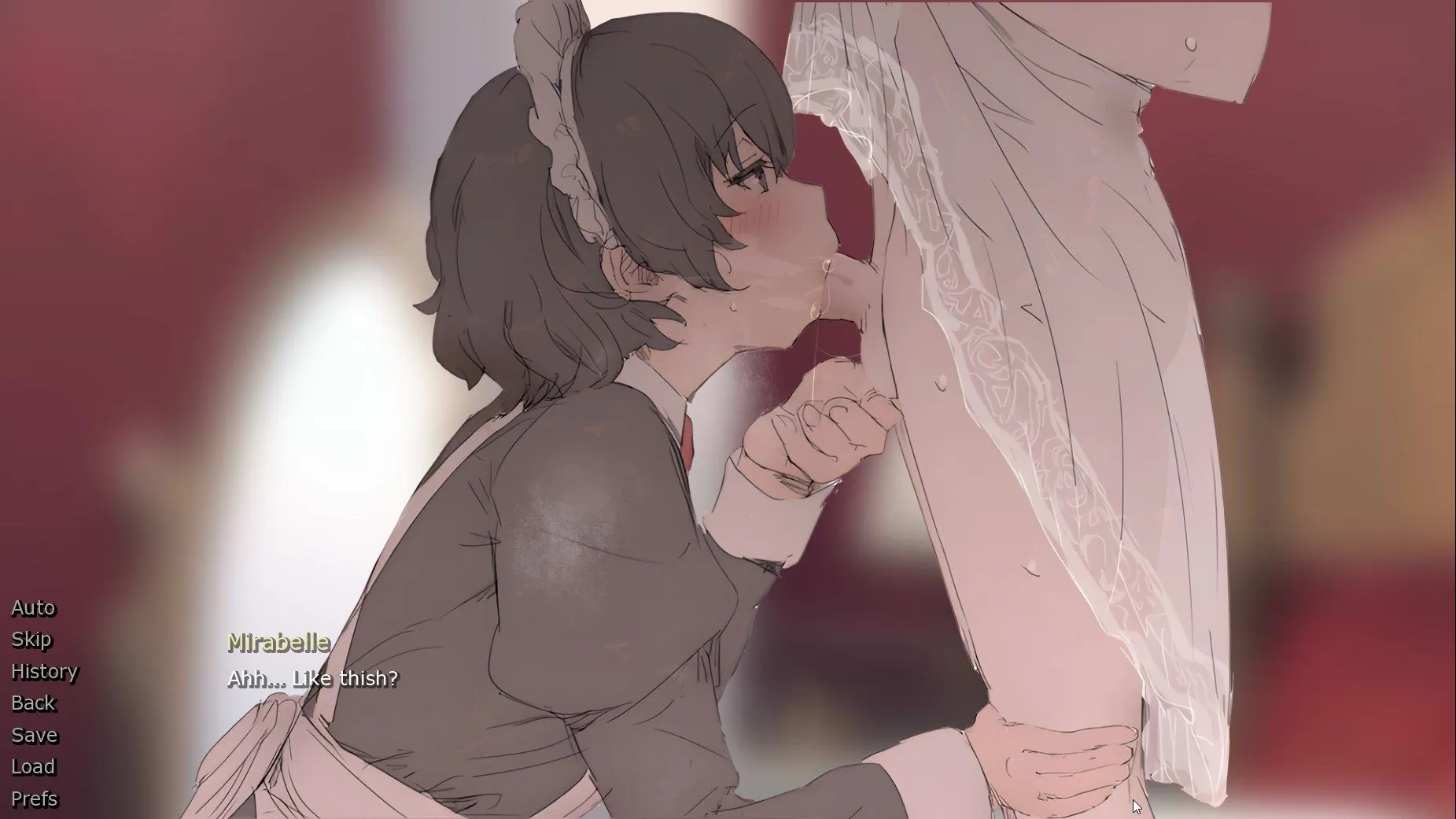
A Summer’s End – Hong Kong, 1986
Play A Summer’s End – Hong Kong, 1986
A Summer’s End – Hong Kong, 1986 review
Exploring the Story, Characters, and Cultural Depth of A Summer’s End – Hong Kong, 1986
A Summer’s End – Hong Kong, 1986 is a captivating visual novel that immerses players in a heartfelt romance set against the vibrant backdrop of 1980s Hong Kong. Centered on Michelle, a young office worker, and her chance encounter with Sam, a home video store owner, the game explores themes of love, identity, and cultural tension. This article delves into the game’s narrative depth, character development, and unique setting, offering insights into why it resonates with fans of story-driven games and retro aesthetics.
Narrative and Themes in A Summer’s End – Hong Kong, 1986
Who Are Michelle and Sam?
Let me tell you about the first time I really met Michelle and Sam. It wasn’t through a trailer or a screenshot; it was through a quiet moment in the game, where Michelle, dressed in her sharp office attire, feels completely out of place at a bustling local market. 🏙️ That’s the magic of A Summer’s End – Hong Kong, 1986. The A Summer’s End story doesn’t introduce its protagonists with grand fanfare, but with a sense of palpable unease and quiet longing. You feel their worlds before you fully understand them.
Michelle is a young, successful professional navigating the corporate world. She’s the picture of 80s ambition, but beneath that polished exterior lies a deep-seated conflict with her traditional family expectations. She’s caught between duty and desire, a feeling I think many of us can relate to, regardless of our background. Sam, on the other hand, is a free-spirited, independent woman who runs a local video store. She embodies a different side of 1980s Hong Kong culture—more casual, more openly expressive, and less constrained by convention. The Michelle and Sam characters are crafted as perfect foils, and their meeting is the spark that ignites the entire narrative.
Sam smiled, a genuine, easy-going grin that seemed to disarm the whole bustling street. “You look like you could use a drink that doesn’t come in a porcelain cup.” Michelle, caught off guard, felt a wall she didn’t even know she was maintaining begin to crack.
This initial interaction sets the stage for a beautifully paced visual novel romance. It’s not about instant passion, but a gradual, tender unfolding. You witness their conversations, their shared glances, and the small, hesitant steps they take toward each other. The narrative depth in A Summer’s End shines in these dialogues, which feel authentic and charged with unspoken emotion. Getting to know Michelle and Sam is like slowly befriending two real people; you learn their fears, their hopes, and the subtle ways they challenge and complement one another. Their journey is the very heart of the A Summer’s End story, making you invested in every choice and every consequence. 💖
Exploring Identity and Culture in 1980s Hong Kong
The setting of this game is so much more than a backdrop; it’s a silent character that shapes every scene. The portrayal of 1980s Hong Kong culture is incredibly vivid. You can almost hear the synth-pop drifting out of a shopfront, feel the humid summer air, and taste the street food. 🍜 This was a unique time—a vibrant, buzzing metropolis on the cusp of major political change, yet brimming with its own distinctive energy. The game captures this duality perfectly, not through heavy-handed history lessons, but through the lived experience of its characters.
For Michelle, Hong Kong represents both her heritage and her prison. Her struggle is a powerful exploration of identity themes in games. She is a modern woman trying to find her place within a family structure that values tradition above individual happiness. Have you ever felt pulled in two different directions by who you are versus who you’re expected to be? That’s Michelle’s daily reality. The game brilliantly uses the city’s landscape—from the sleek, modern high-rises to the cramped, traditional family apartments—to mirror her internal conflict.
Sam’s identity is more intertwined with the city’s contemporary, underground pulse. Her world of video tapes and casual social circles offers an alternative vision of life in Hong Kong. The contrast between Michelle’s and Sam’s environments is a masterclass in visual storytelling, emphasizing the central identity themes in games. It’s about finding where you belong when you don’t quite fit into the predefined boxes. The A Summer’s End story uses this specific cultural moment to ask universal questions about self-discovery and authenticity, making the experience deeply resonant. The attention to detail in the art and music doesn’t just create atmosphere; it builds a world where these personal battles feel incredibly real and urgent. 🎶
How Does the Story Balance Romance and Family Dynamics?
This is where the A Summer’s End story truly excels. Many stories about romance treat family as an obstacle or a simple plot device. Here, the family dynamics in visual novels are given equal weight, intricately woven into the fabric of the visual novel romance. It’s not a separate “issue” for the couple to overcome; it’s a fundamental part of who Michelle is, and therefore, a fundamental part of her relationship with Sam. 🤝
The game presents a delicate balancing act. On one side, you have the tender, growing connection between Michelle and Sam—the stolen moments, the intimate conversations, the fear and excitement of a first love. On the other, you have the immense pressure from Michelle’s family, whose expectations are a constant, looming presence. The narrative depth in A Summer’s End comes from how these two forces constantly interact. A tender moment with Sam can be shattered by a phone call from home. A family dinner becomes an exercise in tension and unspoken truths.
What makes the Michelle and Sam characters so compelling is how they navigate this. Sam isn’t just a romantic interest; she becomes a sanctuary and a source of strength, yet also a reminder of the life Michelle is risking. Michelle’s journey isn’t about rejecting her family, but about finding the courage to negotiate a new relationship with them on her own terms. This nuanced approach to family dynamics in visual novels elevates the story beyond a simple love story into a poignant tale about personal freedom and the cost of authenticity.
The game’s choices often put you right in the middle of this tension. Do you prioritize a date with Sam, or attend a family obligation? There’s no easy answer, and that’s the point. This balancing act is what gives the A Summer’s End story its emotional weight and makes the visual novel romance feel earned and profoundly meaningful.
| Theme | How it Manifests in the Story | Impact on Characters |
|---|---|---|
| Love & Romance | Through gentle, evolving conversations and shared experiences between Michelle and Sam. | Provides a catalyst for Michelle’s self-discovery and challenges Sam’s independent lifestyle. |
| Identity | Explored via Michelle’s conflict between corporate life, family duty, and her true self. | Drives the central character arc, forcing Michelle to confront who she is and who she wants to be. |
| Family | Portrayed through expectations, traditions, and the unspoken weight of familial love. | Acts as the primary source of internal and external conflict, shaping decisions and relationships. |
| Culture | Embedded in the setting, music, fashion, and the social norms of 1980s Hong Kong. | Creates the specific context for the characters’ struggles, making their journey unique and authentic. |
Ultimately, the genius of A Summer’s End – Hong Kong, 1986 lies in its refusal to simplify. The romance is sweet and compelling, but it’s grounded in the messy, complicated reality of life, family, and culture. It’s a story that stays with you, not just for the relationship it portrays, but for the honest way it portrays the whole person within that relationship. ✨
A Summer’s End – Hong Kong, 1986 offers a rich, emotionally engaging experience that combines a compelling romance with thoughtful cultural and identity themes. Its vivid 1980s Hong Kong setting and well-crafted characters make it a standout visual novel for players seeking meaningful storytelling. Whether you are drawn to its nostalgic art style or its heartfelt narrative, this game invites players to explore love and self-discovery in a unique historical context. Dive into the story and experience the warmth and complexity of A Summer’s End.












